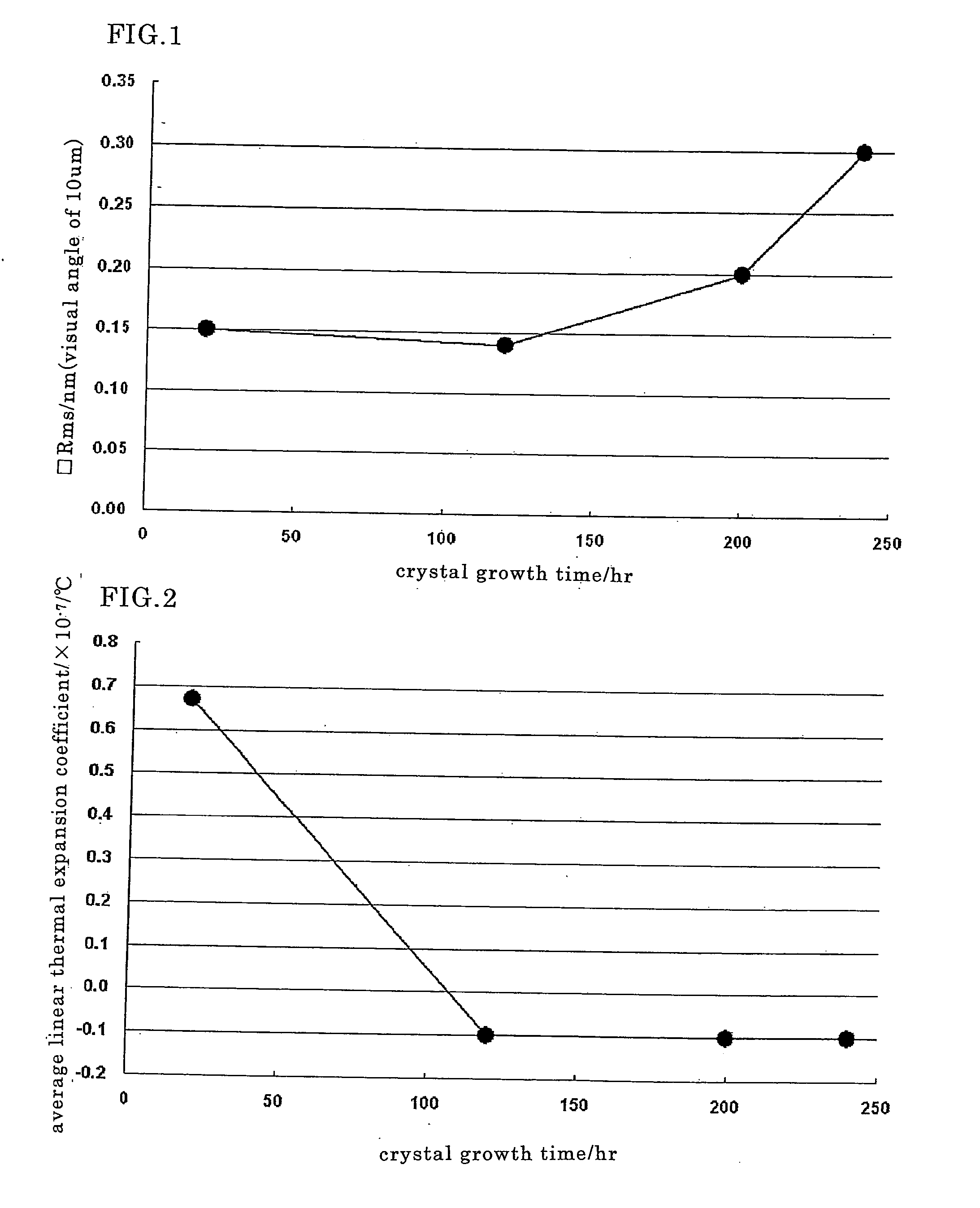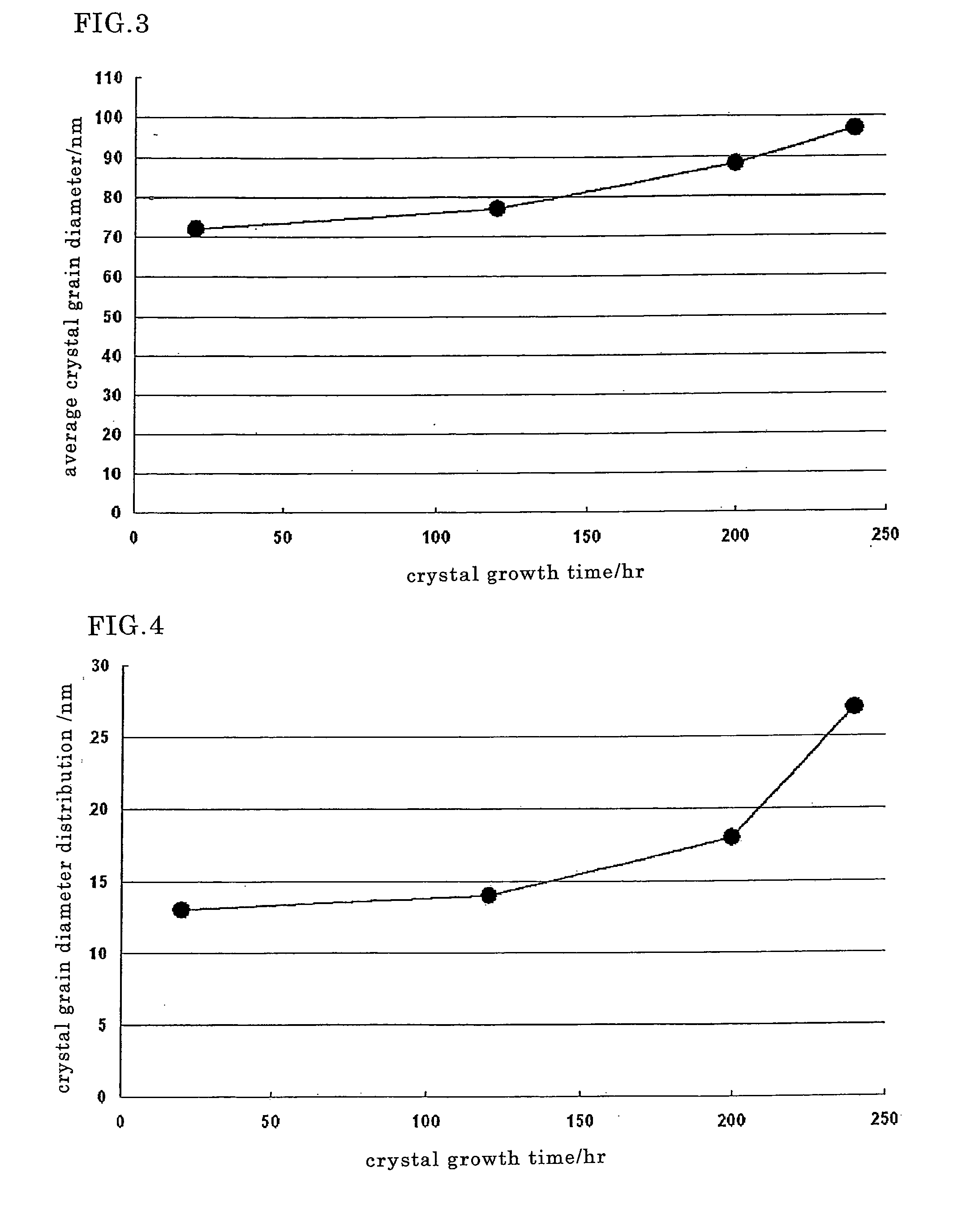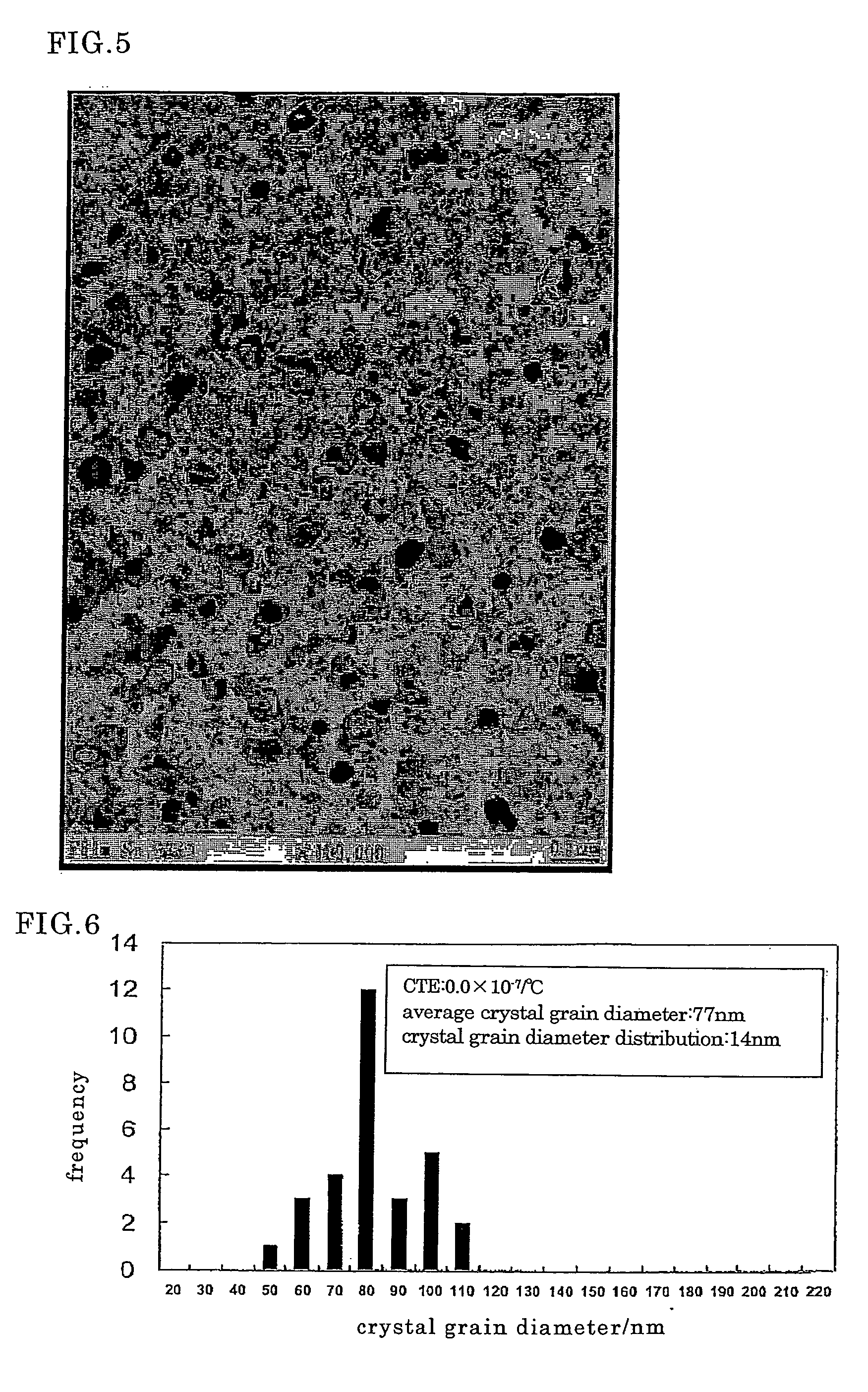Glass ceramics and a method for manufacturing the same
a glass ceramic and glass technology, applied in the field of glass ceramics, can solve the problems of large variation in the magnitude the inability to control temperature, and the distribution of crystal grain diameter, and achieve the effect of excellent mirror or photo mask
- Summary
- Abstract
- Description
- Claims
- Application Information
AI Technical Summary
Benefits of technology
Problems solved by technology
Method used
Image
Examples
examples
[0098] Examples of the present invention will now be described. The invention however is not limited by these examples. Tables 1, 2 and 3 show examples of compositions (Example No. 1 to Example No. 6) of the ultra low thermal expansion transparent glass-ceramics of the present invention and compositions of the comparative examples, namely prior art Li2O—Al2O3—SiO2 low expansion glass-ceramics (Comparative Example No. 1 to Comparative Example No. 10) together with their crystallization temperature and time length (nucleation holding and crystal growth holding), average crystal grain diameter, crystal grain diameter distribution, surface roughness (Rms) after polishing, average linear thermal expansion coefficient within the temperature range from 0° C. to 50° C. The compositions of the respective examples and comparative examples are shown in mass %.
[0099]FIG. 1 shows relationship between crystallization time and surface roughness Rms of the composition of glass-ceramics of Example ...
PUM
| Property | Measurement | Unit |
|---|---|---|
| Temperature | aaaaa | aaaaa |
| Temperature | aaaaa | aaaaa |
| Temperature | aaaaa | aaaaa |
Abstract
Description
Claims
Application Information
 Login to View More
Login to View More - R&D
- Intellectual Property
- Life Sciences
- Materials
- Tech Scout
- Unparalleled Data Quality
- Higher Quality Content
- 60% Fewer Hallucinations
Browse by: Latest US Patents, China's latest patents, Technical Efficacy Thesaurus, Application Domain, Technology Topic, Popular Technical Reports.
© 2025 PatSnap. All rights reserved.Legal|Privacy policy|Modern Slavery Act Transparency Statement|Sitemap|About US| Contact US: help@patsnap.com



